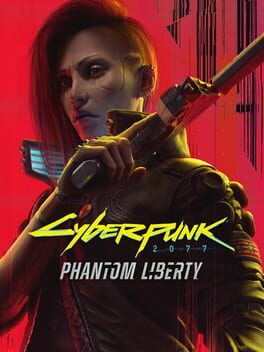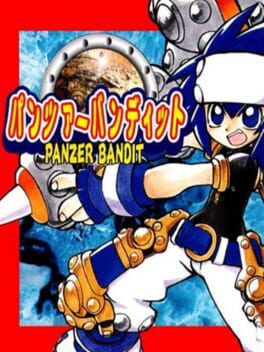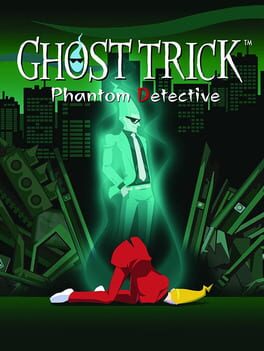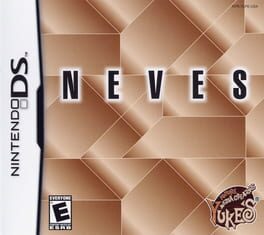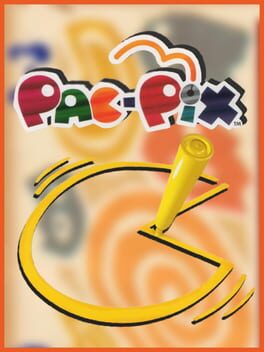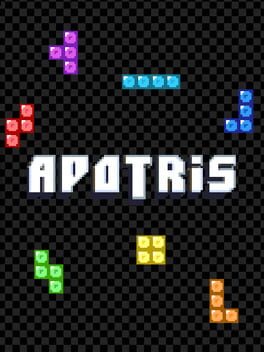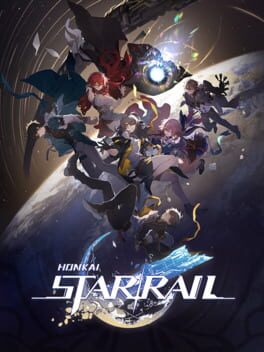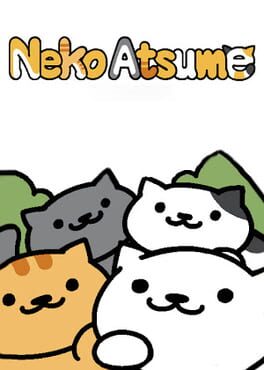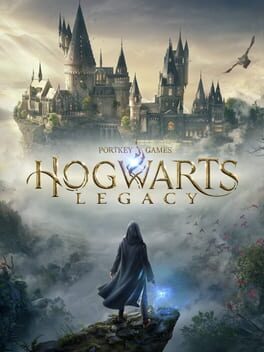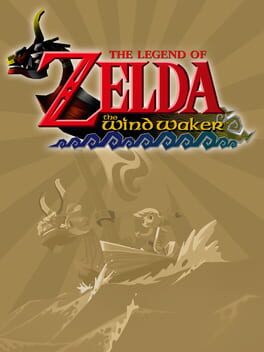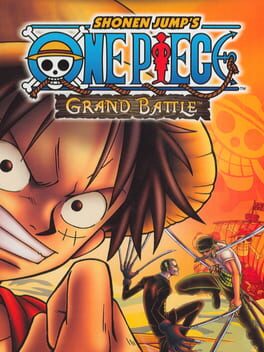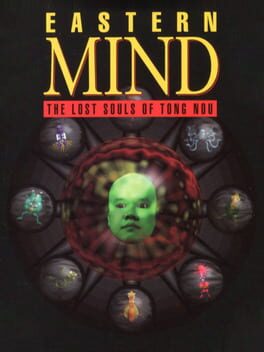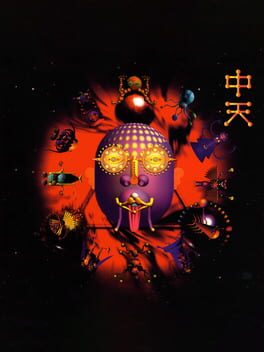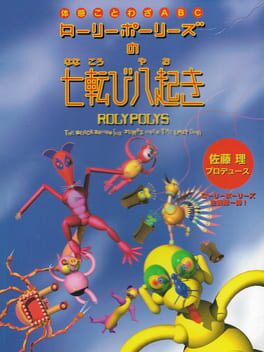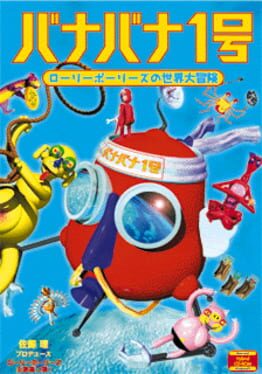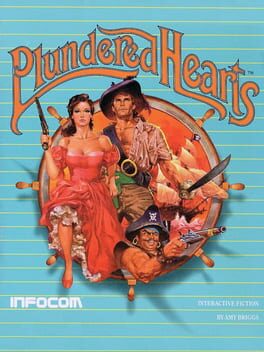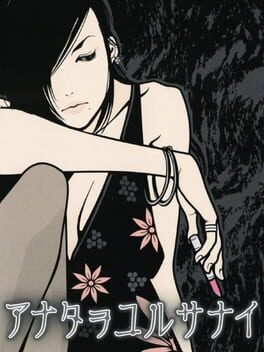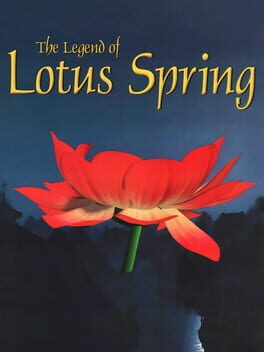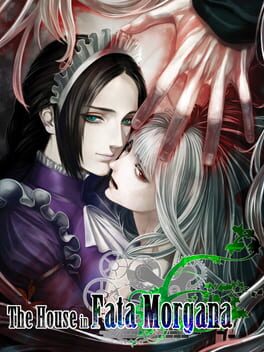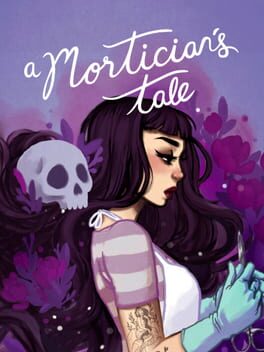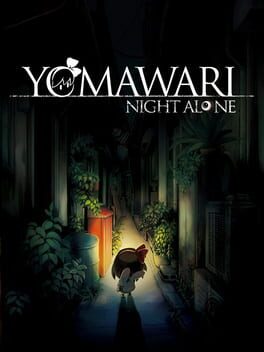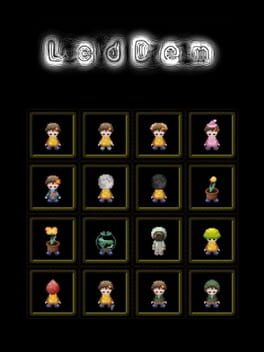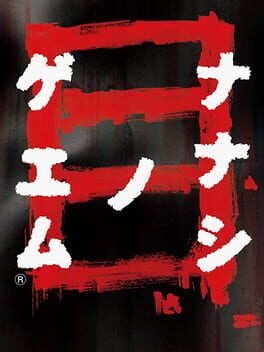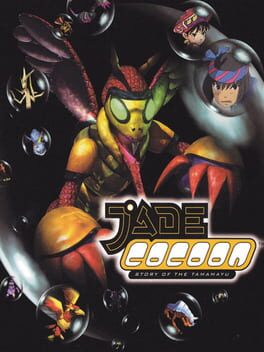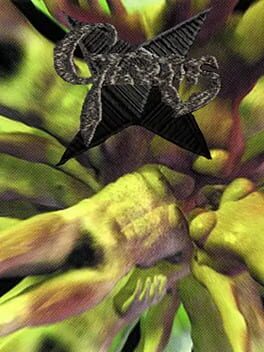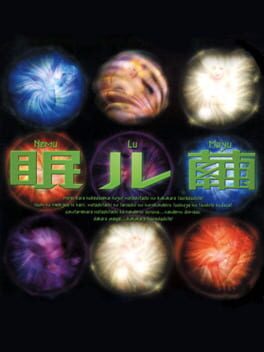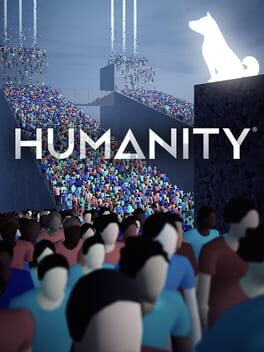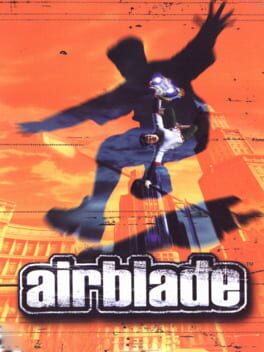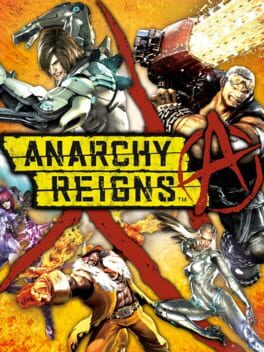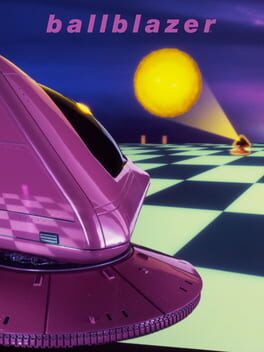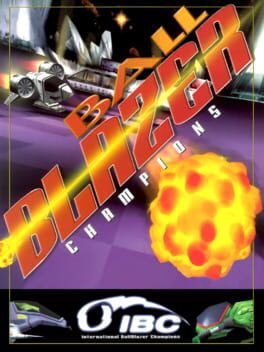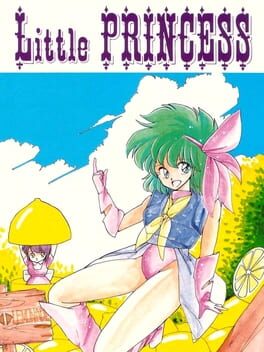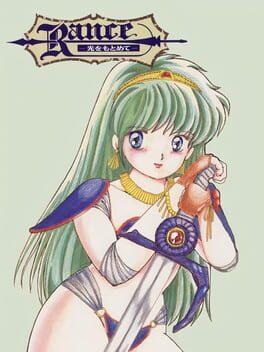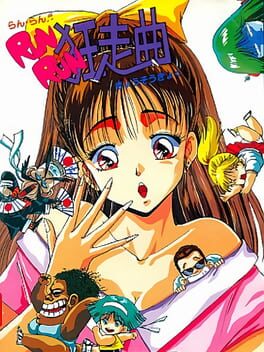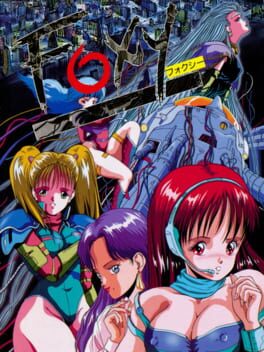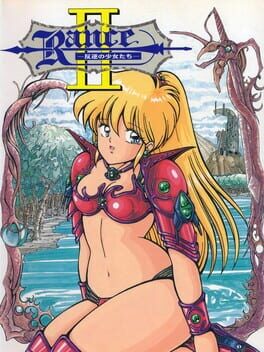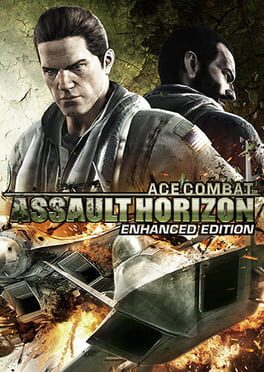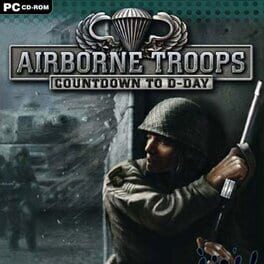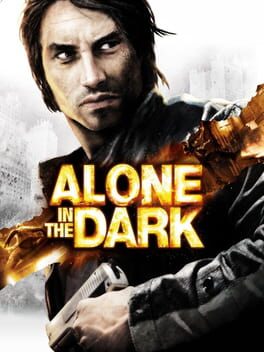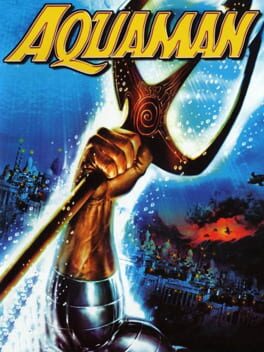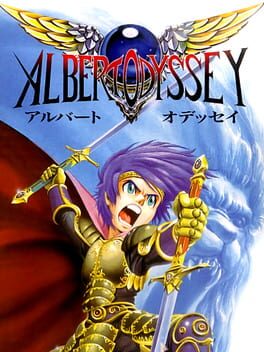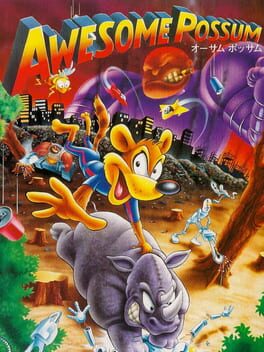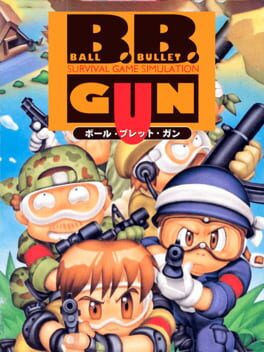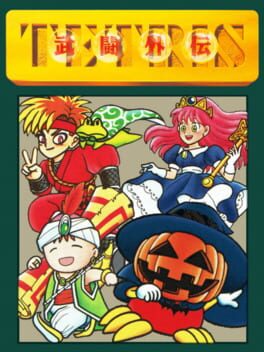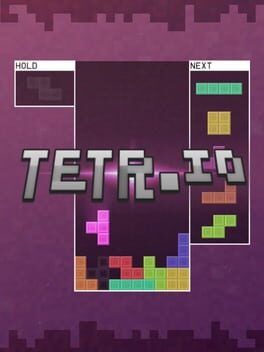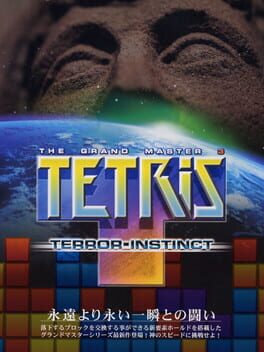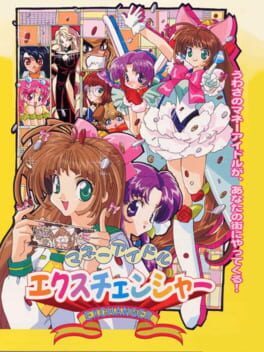eyezack
62 reviews liked by eyezack
Panzer Bandit
1997
very high energy low budget title. there isn't much unique content, the enemy encounters are just whatever spaghetti, but the game feel really elevates my enjoyment of this game. it feels really good to just spam 20 fireballs enemies (or other players lol) can't retaliate against, or jump installing a ground dash through the prolonged hitstop of a dash normal to circumvent the games lack of prejump frames. speaking of which, although that specific technique while very difficult and essentially frame perfect, it only exists because of the only thing i do find annoying about this game; it's massive buffer window, on top of negative edge lasting like around 15 frames. this leads to you all the time accidentally performing the same move twice in a row, randomly jumping/dashing, etc. but i'm willing to take that trade off for sweatlord jump cancels.
Neves
2007
Dissection puzzles have existed at least as long as recorded history, probably. In brief: a dissection puzzle is a set of tiles that can be assembled to create at least two (but usually more) different configurations of geometric shapes. It’s an idea so simple that variations of it appeared in at least two different parts of the world completely independent of one another. In Ancient Greece, dissection puzzles that visually illustrate the Pythagorean theorem were developed, and are believed to be instrumental to its proof as a fundamental relation of geometry. In China, a type of dissection puzzle known as the tangram has origins in oddly shaped modular banquet tables of the Song dynasty, meant to be moved around and arranged into fun shapes to entertain guests.
How exactly dissection puzzles made their way to Japan is unclear. In 1935, Hanayama Toys manufactured a dissection puzzle made of wooden blocks called the Lucky Puzzle and codified the version of the game that would remain popular in the Land of the Rising Sun to this day. Likely based on the tangram, it bears a remarkable similarity to its Chinese cousin. It’s composed of seven pieces, just like a tangram, but has an elegant self-symmetry that makes it unique from almost all other dissection puzzles.
In Japan, the Lucky Puzzle is recognizable enough that no explanation is needed. So in November of 2007, when a Nintendo DS game based on the classic brain teaser was released, they simply only needed to call it Lucky Puzzle DS. However, North America required a different strategy. Dissection puzzles reached western shores at various points in history, but failed to establish themselves as popular choices for would-be brainiacs. Rather than call it what it is, Osaka-based publisher and developer Yuke's invented the nonsense word Neves to adorn the front cover, similar to other puzzle games on the system. (Polarium, Zenses, and Magnetica, to name just a few of many examples.)
Even without the strong cultural recognition, Neves is intuitively easy to pick up and play. Following a brief tutorial, you’re ready to get right into snapping together shapes. The main attraction is the “Silhouettes?” mode, which is a digital refresh of a Lucky Puzzle picture book. You’re provided with outlines of the solution you’re tasked to replicate, and you have an unlimited amount of time to flip and rotate blocks until you figure it out. The puzzles themselves run a good gamut of difficulty, from ones you can solve at a glance to others that will have you fitting shapes together in every possible configuration and still scratching your head. On a few occasions, I even encountered a version of the famous tangram paradox, in which a construction of pieces seems to be an impossible subset of another. Very cool!
Neves does, however, ignore an important element of dissection puzzles: the ability to create your own silhouettes and challenge other players to mirror them. Perhaps this wasn’t possible due to the medium or too complicated for the type of budget the developers were working with, but Neves does attempt to offset this shortcoming with a couple of additional game modes. There are timed versions of each puzzle, as well as a “7 Steps” mode in which each block you place can’t be moved once it’s glued down.
Due to its novel form factor and tactile controls, the Nintendo DS would end up being an incredible platform for puzzle games. Untethered from the need to interface with games through the mechanical presses of buttons alone, it became possible for your hands to interact with puzzles almost as quickly as your brain could parse through them. Neves doesn’t make the experience perfectly seamless (the flipping and rotating can be a little clunky), but one need only compare to games like Tangram for the Amiga or Daedalian Opus to see how quickly things speed up. It’s a surprisingly solid offering, but then again, it does have the advantage of a few millennia of game design.
How exactly dissection puzzles made their way to Japan is unclear. In 1935, Hanayama Toys manufactured a dissection puzzle made of wooden blocks called the Lucky Puzzle and codified the version of the game that would remain popular in the Land of the Rising Sun to this day. Likely based on the tangram, it bears a remarkable similarity to its Chinese cousin. It’s composed of seven pieces, just like a tangram, but has an elegant self-symmetry that makes it unique from almost all other dissection puzzles.
In Japan, the Lucky Puzzle is recognizable enough that no explanation is needed. So in November of 2007, when a Nintendo DS game based on the classic brain teaser was released, they simply only needed to call it Lucky Puzzle DS. However, North America required a different strategy. Dissection puzzles reached western shores at various points in history, but failed to establish themselves as popular choices for would-be brainiacs. Rather than call it what it is, Osaka-based publisher and developer Yuke's invented the nonsense word Neves to adorn the front cover, similar to other puzzle games on the system. (Polarium, Zenses, and Magnetica, to name just a few of many examples.)
Even without the strong cultural recognition, Neves is intuitively easy to pick up and play. Following a brief tutorial, you’re ready to get right into snapping together shapes. The main attraction is the “Silhouettes?” mode, which is a digital refresh of a Lucky Puzzle picture book. You’re provided with outlines of the solution you’re tasked to replicate, and you have an unlimited amount of time to flip and rotate blocks until you figure it out. The puzzles themselves run a good gamut of difficulty, from ones you can solve at a glance to others that will have you fitting shapes together in every possible configuration and still scratching your head. On a few occasions, I even encountered a version of the famous tangram paradox, in which a construction of pieces seems to be an impossible subset of another. Very cool!
Neves does, however, ignore an important element of dissection puzzles: the ability to create your own silhouettes and challenge other players to mirror them. Perhaps this wasn’t possible due to the medium or too complicated for the type of budget the developers were working with, but Neves does attempt to offset this shortcoming with a couple of additional game modes. There are timed versions of each puzzle, as well as a “7 Steps” mode in which each block you place can’t be moved once it’s glued down.
Due to its novel form factor and tactile controls, the Nintendo DS would end up being an incredible platform for puzzle games. Untethered from the need to interface with games through the mechanical presses of buttons alone, it became possible for your hands to interact with puzzles almost as quickly as your brain could parse through them. Neves doesn’t make the experience perfectly seamless (the flipping and rotating can be a little clunky), but one need only compare to games like Tangram for the Amiga or Daedalian Opus to see how quickly things speed up. It’s a surprisingly solid offering, but then again, it does have the advantage of a few millennia of game design.
Pac-Pix
2005
It seems like almost since its inception, the iconic game series Pac-Man has been trying to reinvent itself. After a couple of minor reskins of the original gameplay concept, designer Toru Iwatani threw out the entire handbook only two years later with the absolutely bonkers Super Pac-Man. Instead of simply chomping on dots, our pie-chart-shaped protagonist is tasked with collecting keys and opening doors as he navigates through a very unfamiliar maze. Since then, the series has oscillated between returning to original form and burning the house down, to varying degrees of success. Through earnest attempts to refresh the core gameplay (like the excellent Pac-Mania, by Iwatani himself) and blatant attempts to cash in on the brand (like Pac-In-Time, a reskin of the already existing Fury of the Furries), Pac-Man persisted as a recognizable character even as he became increasingly divorced from the simplistic dot-scarfing gameplay that made him a household name.
By the time Pac-Pix—a very early Nintendo DS title released in 2005’s first quarter—was dropped into the market, Pac-Man had already been locked in for decades as a permanent member of the gaming Pantheon alongside the likes of Mario and Sonic. Pac-Pix’s premise is a recognition of its place in a long history. Director Tetsuya Shinoda, who had no experience with developing Pac-Man titles before or since, cooked up something simple: the player draws the classic character on the bottom screen of the DS, bringing him to life by their own hand and guiding him through the stages with touch controls. On its face, it’s a brilliant conceit; everyone knows what Pac-Man looks like, and anyone can draw him.
The concept might seem like a match made in heaven for the Nintendo DS, but Shinoda had been nursing it much earlier. It was first conceived as an arcade title, and then as an application for Personal Digital Assistants—because yes, those were still around by the mid 2000s! When the massively successful DS arrived onto the scene, with its highly responsive touch controls that put the gaming experience on any PDA to shame, it gave Shinoda and producer Hideo Yoshizawa the perfect opportunity to pitch the game to Namco. Yippee!
So does Pac-Pix manage to do much with its great idea? Truthfully, not really. Once Pac-Man has been prestidigitized onto the playing field, your means of controlling him are frustratingly limited. You manipulate him solely through use of the bottom screen, drawing lines to guide his path (he can only move in a simple four directions, as you’d expect) and altering his momentum by tapping and dragging him. It’s a strikingly similar control scheme to Kirby: Canvas Curse, which, despite releasing a mere 14 days after Pac-Pix, manages to be a far more seamless experience. Something about Pac-Pix that genuinely is very delightful, however, is how forgiving it is of mistakes. You can draw him pretty oblong, misshapen, large or small and he’ll still come to life and start munching away.
Ultimately, it’s good to frame Pac-Pix in its proper context before being too harsh on it. It’s an idea that predates the hardware it was made for, shopped around as a tech demo, and developed on a fairly small budget. It doesn’t have the same benefit as early DS efforts by Nintendo; the developers didn’t seem to have an extremely keen understanding of the system’s capabilities. In spite of all this, it manages to be decently fun and cute. And credit where it’s due: it strikes a nice balance between novelty and a recognizably Pac-Man experience.
By the time Pac-Pix—a very early Nintendo DS title released in 2005’s first quarter—was dropped into the market, Pac-Man had already been locked in for decades as a permanent member of the gaming Pantheon alongside the likes of Mario and Sonic. Pac-Pix’s premise is a recognition of its place in a long history. Director Tetsuya Shinoda, who had no experience with developing Pac-Man titles before or since, cooked up something simple: the player draws the classic character on the bottom screen of the DS, bringing him to life by their own hand and guiding him through the stages with touch controls. On its face, it’s a brilliant conceit; everyone knows what Pac-Man looks like, and anyone can draw him.
The concept might seem like a match made in heaven for the Nintendo DS, but Shinoda had been nursing it much earlier. It was first conceived as an arcade title, and then as an application for Personal Digital Assistants—because yes, those were still around by the mid 2000s! When the massively successful DS arrived onto the scene, with its highly responsive touch controls that put the gaming experience on any PDA to shame, it gave Shinoda and producer Hideo Yoshizawa the perfect opportunity to pitch the game to Namco. Yippee!
So does Pac-Pix manage to do much with its great idea? Truthfully, not really. Once Pac-Man has been prestidigitized onto the playing field, your means of controlling him are frustratingly limited. You manipulate him solely through use of the bottom screen, drawing lines to guide his path (he can only move in a simple four directions, as you’d expect) and altering his momentum by tapping and dragging him. It’s a strikingly similar control scheme to Kirby: Canvas Curse, which, despite releasing a mere 14 days after Pac-Pix, manages to be a far more seamless experience. Something about Pac-Pix that genuinely is very delightful, however, is how forgiving it is of mistakes. You can draw him pretty oblong, misshapen, large or small and he’ll still come to life and start munching away.
Ultimately, it’s good to frame Pac-Pix in its proper context before being too harsh on it. It’s an idea that predates the hardware it was made for, shopped around as a tech demo, and developed on a fairly small budget. It doesn’t have the same benefit as early DS efforts by Nintendo; the developers didn’t seem to have an extremely keen understanding of the system’s capabilities. In spite of all this, it manages to be decently fun and cute. And credit where it’s due: it strikes a nice balance between novelty and a recognizably Pac-Man experience.
Apotris
2022
What is the best version of Tetris? Depending on the kind of Tetris you’re used to playing, the answer to that question will vary wildly. If you grew up on the rigid simplicity of NES Tetris, you might prefer to stick with that version. There’s a passionate cult of devotees for each iteration of Tetris the Grand Master, for those that love the intensity of a finely tuned competitive arcade experience. If you’re more into style over gameplay, perhaps you’ll gravitate to the proto-vaporwave aesthetics of Tetris for the Philips CD-i or the sensory overload of Tetsuya Mizuguchi’s Tetris Effect. If for some reason you wanna stack blocks but you also want to get horny, there’s even a pirate game for DOS platforms called Porntris. With all of these different versions of the tetromino stacking game out there, who exactly is Apotris for?
The homebrew title, developed solely by Game Boy Advance enthusiast Apostolos, aims to provide a little something for everyone via a truly staggering amount of customization. Whether you want flashy visuals or the most utilitarian options for clarity, Apotris has settings that are likely to work for you. Ghost blocks and grid views are available to ensure that you know exactly where your tetrominoes will fall, or you can take the training wheels off entirely if you’d prefer more difficulty. You can play a traditional marathon mode, a timed sprint mode in which you clear a predetermined number of lines (by far the best mode for practicing speed and building muscle memory), or puzzle modes for testing your problem solving in unconventional stacking situations. There’s even a classic mode if you’re not particularly a fan of modern Tetris mechanics.
Apotris doesn’t manage to capture all the possibilities of Tetris; that’s impossible. But it comes closer than anything else has managed. It’s most suited to speed demons that are accustomed to modern Tetris mechanics—so unique games like the Grand Masters, Tetris Effect, or Tetris 99 will always have their niche—but Apotris does what it does better than almost any other Tetris game released after 2001, when the standardized guidelines for gameplay were written. I find myself reaching for Apotris whenever I simply want to play Tetris. It’s hard to overstate how impressive it is to establish yourself as the most solid option when you’re competing with hundreds of different games.
The homebrew title, developed solely by Game Boy Advance enthusiast Apostolos, aims to provide a little something for everyone via a truly staggering amount of customization. Whether you want flashy visuals or the most utilitarian options for clarity, Apotris has settings that are likely to work for you. Ghost blocks and grid views are available to ensure that you know exactly where your tetrominoes will fall, or you can take the training wheels off entirely if you’d prefer more difficulty. You can play a traditional marathon mode, a timed sprint mode in which you clear a predetermined number of lines (by far the best mode for practicing speed and building muscle memory), or puzzle modes for testing your problem solving in unconventional stacking situations. There’s even a classic mode if you’re not particularly a fan of modern Tetris mechanics.
Apotris doesn’t manage to capture all the possibilities of Tetris; that’s impossible. But it comes closer than anything else has managed. It’s most suited to speed demons that are accustomed to modern Tetris mechanics—so unique games like the Grand Masters, Tetris Effect, or Tetris 99 will always have their niche—but Apotris does what it does better than almost any other Tetris game released after 2001, when the standardized guidelines for gameplay were written. I find myself reaching for Apotris whenever I simply want to play Tetris. It’s hard to overstate how impressive it is to establish yourself as the most solid option when you’re competing with hundreds of different games.
This review contains spoilers
tetsuya takahashi read like 5 pop psychology books in the 90s then wrote 20 or so rough ideas on post it notes that he has since used as the guide for his entire career.
this game is a amalgamation of the two xenoblades behind it held up by threads of ideas established in the games even older than them. this union feels wonderful and fresh when the game is taking old areas and assets and giving them new life in a new context. two worlds never meant to be together are forced to mesh into one place. cohesive and natural to those who live in it but off putting and exciting to those who’ve seen these individual elements in their original settings. the world of this game, when it isn’t resting on its laurels is beautiful.
early on the story feels the same, there’s a familiarity to its plot and the motions it goes through but it’s playing with new and interesting ideas. an endless proxy war where no real ground is seeded fought just so the people in power who rely on the war machine to survive have said war machine is fucking great. the concept of a life that is trapped to never live past 10 years, constantly living and dying in the same cycle restricted so one stays complacent is fucking biting. but then the game just starts falling back on doing the same things the previous games did, verbatim. areas become the most obvious fusions they could be, the story starts falling into the same grooves every xenoblade game does and the beat by beat plot summary becomes indistinguishable from a friends hazy retelling of the previous games stories. the main characters into cybernetic bodies, the worlds fusing, a god killed to bring about a new future. it uses synonyms but it’s the same story with the edges filed off.
the more the writing follows previous stories the more the idea of “the endless now, a cyclical forever” nags at the back of your head as meta commentary. but if it is, is that pull worth bringing the rest of the game down with it?
that’s not even covering the weaker main characters and absolutely nothing shit boring gameplay. the main cast are all charming but not in any real distinct way. they have moments where they all individually really shine (esp mio, eunie and lanz ) but another 80 hours where they’re nothing more then a face to cut to in a reaction shot. this game wants to hold all 6 main characters up equally as protagonist without having the understanding that those characters have to have 6 unique voices.
this also is painfully felt in it’s gameplay. xc2 is tutorialess and rough for hours on end but as more mechanics are stacked and stacked and you grow attuned to how they all connect it becomes incredibly rewarding, it’s just plain fun. the more xenoblade chronicles 3 adds to its combat the more boring it becomes. trying to balance the clashing styles of 1 and 2s combat in the agnian and kevesi units in the early game is the most fun the combat ever is.
the second you have 7 bodies on screen all buzzing and yapping with numbers and buffs flying about as every character tries to find the moment to unleash their super awesome mega hyper attack it just feels like too much. like something that’s trying to get your attention by being as flashy and loud as it possibly that it wraps around to being nothing. you might as well tune it out. there’s no channeling the chaos into something great. there’s not substance to it. there’s just smashing and slashing till you get bored and hit the auto button.
this game could never be what i wanted it to be. a child of early covid development and the need to make a new Product to continue a Franchise it didn’t have much going for it. im aware some of my issues are supposedly solved in future redeemed but that’s a solution that isn’t in the base game. it doesn’t fix the problems i have in any real way.
i think i still love it this game though, the main story is overwrought and downright awful at points but when it’s cooking it’s cooking. there’s a few side missions in this game that remind me why i hold this series as close to my chest as i do.
there’s this dictator that thinks he’s a pirate. this immortal being that lives off the death and rebirth of the soldiers under his thumb and uh, he fucking hates it. living this endless nothing has left him discontent, life loses its meaning when it’s unchanging. he took this forever out of fear he wouldn’t get to do everything he wanted to do in life but he comes to the conclusion that would have been okay. he starts to treat those under his command as companions on a pirate crew. he’s still in control of them, he’s aware of this fact but he can’t not be. he’s the equivalent of “the one good ceo” trying to truly help those working under him while still being the parasite that is only alive because of them.
he doesn’t want this though. even if the lives under him are improved under his “loving fist” their still under someone in the first place.
in his owns words he’s seen so many people who could have lived for their own reasons. lived to hunt, to sail, to make art all filed into living for the same reason. to survive. the system we live under not giving anyone any other choice. he says that if his living in the world is what prevents it from changing for the better then maybe it’s better off he’s dead and out of the way.
this stupid fucking “pirate villain” side quest brings me back to my overheated attic bedroom lit exclusively by my tv playing that last hour of xenoblade chronicles in 2018.
it brings me back to the moment i realized tthe discontent i felt with with world could be aimed like a weapon to make a future where we get the choice to live for ourselves.
this game is a amalgamation of the two xenoblades behind it held up by threads of ideas established in the games even older than them. this union feels wonderful and fresh when the game is taking old areas and assets and giving them new life in a new context. two worlds never meant to be together are forced to mesh into one place. cohesive and natural to those who live in it but off putting and exciting to those who’ve seen these individual elements in their original settings. the world of this game, when it isn’t resting on its laurels is beautiful.
early on the story feels the same, there’s a familiarity to its plot and the motions it goes through but it’s playing with new and interesting ideas. an endless proxy war where no real ground is seeded fought just so the people in power who rely on the war machine to survive have said war machine is fucking great. the concept of a life that is trapped to never live past 10 years, constantly living and dying in the same cycle restricted so one stays complacent is fucking biting. but then the game just starts falling back on doing the same things the previous games did, verbatim. areas become the most obvious fusions they could be, the story starts falling into the same grooves every xenoblade game does and the beat by beat plot summary becomes indistinguishable from a friends hazy retelling of the previous games stories. the main characters into cybernetic bodies, the worlds fusing, a god killed to bring about a new future. it uses synonyms but it’s the same story with the edges filed off.
the more the writing follows previous stories the more the idea of “the endless now, a cyclical forever” nags at the back of your head as meta commentary. but if it is, is that pull worth bringing the rest of the game down with it?
that’s not even covering the weaker main characters and absolutely nothing shit boring gameplay. the main cast are all charming but not in any real distinct way. they have moments where they all individually really shine (esp mio, eunie and lanz ) but another 80 hours where they’re nothing more then a face to cut to in a reaction shot. this game wants to hold all 6 main characters up equally as protagonist without having the understanding that those characters have to have 6 unique voices.
this also is painfully felt in it’s gameplay. xc2 is tutorialess and rough for hours on end but as more mechanics are stacked and stacked and you grow attuned to how they all connect it becomes incredibly rewarding, it’s just plain fun. the more xenoblade chronicles 3 adds to its combat the more boring it becomes. trying to balance the clashing styles of 1 and 2s combat in the agnian and kevesi units in the early game is the most fun the combat ever is.
the second you have 7 bodies on screen all buzzing and yapping with numbers and buffs flying about as every character tries to find the moment to unleash their super awesome mega hyper attack it just feels like too much. like something that’s trying to get your attention by being as flashy and loud as it possibly that it wraps around to being nothing. you might as well tune it out. there’s no channeling the chaos into something great. there’s not substance to it. there’s just smashing and slashing till you get bored and hit the auto button.
this game could never be what i wanted it to be. a child of early covid development and the need to make a new Product to continue a Franchise it didn’t have much going for it. im aware some of my issues are supposedly solved in future redeemed but that’s a solution that isn’t in the base game. it doesn’t fix the problems i have in any real way.
i think i still love it this game though, the main story is overwrought and downright awful at points but when it’s cooking it’s cooking. there’s a few side missions in this game that remind me why i hold this series as close to my chest as i do.
there’s this dictator that thinks he’s a pirate. this immortal being that lives off the death and rebirth of the soldiers under his thumb and uh, he fucking hates it. living this endless nothing has left him discontent, life loses its meaning when it’s unchanging. he took this forever out of fear he wouldn’t get to do everything he wanted to do in life but he comes to the conclusion that would have been okay. he starts to treat those under his command as companions on a pirate crew. he’s still in control of them, he’s aware of this fact but he can’t not be. he’s the equivalent of “the one good ceo” trying to truly help those working under him while still being the parasite that is only alive because of them.
he doesn’t want this though. even if the lives under him are improved under his “loving fist” their still under someone in the first place.
in his owns words he’s seen so many people who could have lived for their own reasons. lived to hunt, to sail, to make art all filed into living for the same reason. to survive. the system we live under not giving anyone any other choice. he says that if his living in the world is what prevents it from changing for the better then maybe it’s better off he’s dead and out of the way.
this stupid fucking “pirate villain” side quest brings me back to my overheated attic bedroom lit exclusively by my tv playing that last hour of xenoblade chronicles in 2018.
it brings me back to the moment i realized tthe discontent i felt with with world could be aimed like a weapon to make a future where we get the choice to live for ourselves.
Honkai: Star Rail
2023
Hogwarts Legacy
2023
19 lists liked by eyezack
by kei_ |
50 Games
by HeidenNaugler |
64 Games
by ludzu |
36 Games
by shy |
80 Games
by PansyDragoonSaga |
149 Games
by MendelPalace |
102 Games
by Zanes |
622 Games
by chandler |
158 Games
by chandler |
89 Games
by debitnotcredit |
25 Games
